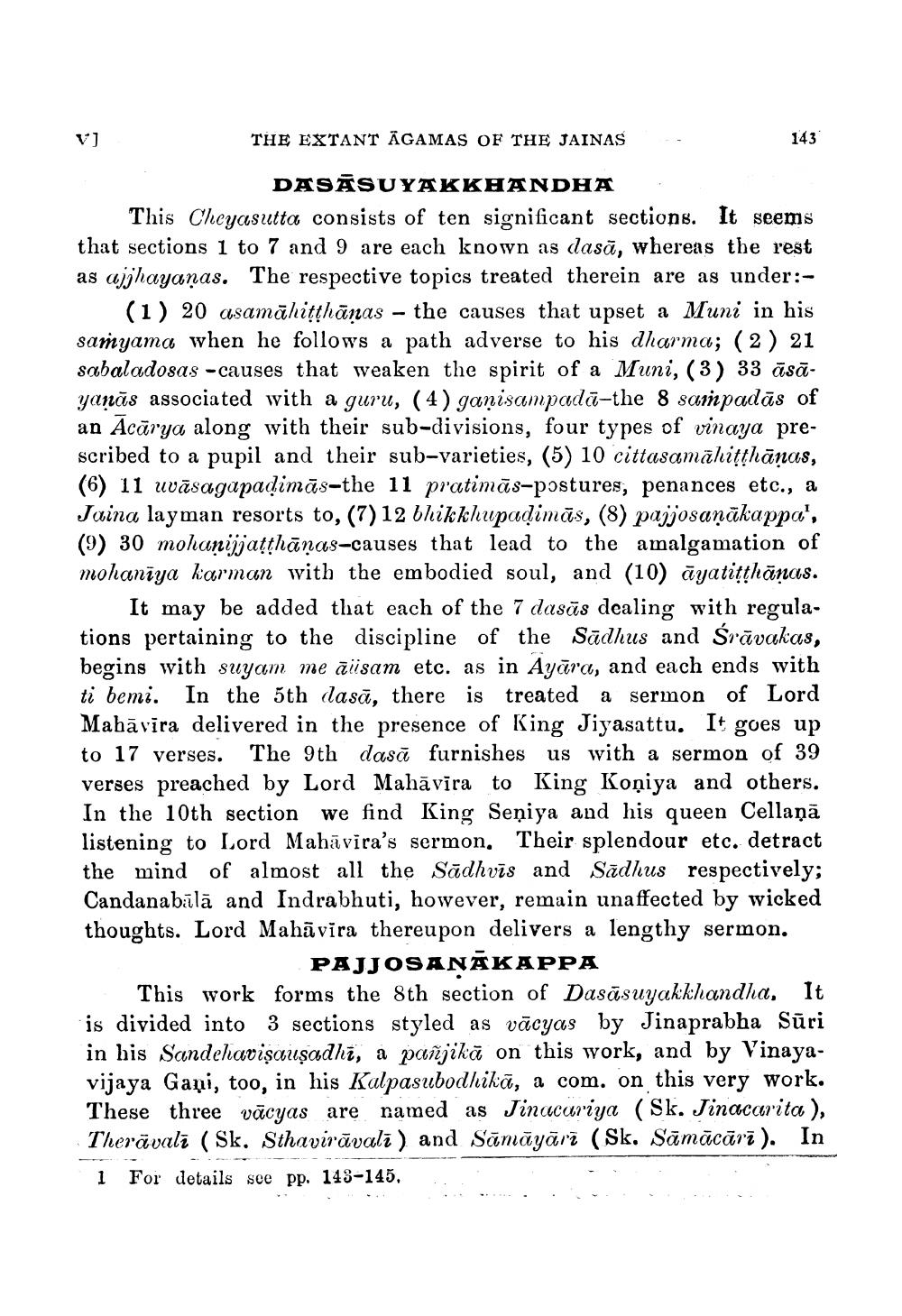________________
VI
THE EXTANT ĀGAMAS OF THE JAINAS
143
1.
1 noua.
regula
DASĀSUYAKKHANDHA This Cheyasutta consists of ten significant sections. It seems that sections 1 to 7 and 9 are each known as dasā, whereas the rest as ajjhayanas. The respective topics treated therein are as under:
(1) 20 asamāhitthānas - the causes that upset a Muni in his samyama when he follows a path adverse to his dharma; (2) 21 sabaladosas -causes that weaken the spirit of a Muni, (3) 33 āsāyanās associated with a guru, (4) ganisampadā-the 8 sampadās of an Acārya along with their sub-divisions, four types of vinaya prescribed to a pupil and their sub-varieties, (5) 10 cittasamāhitthānas, (6) 11 uvāsagapadimās-the 11 pratimās-postures, penances etc., a Jaina layman resorts to, (7)12 bhikkhupadimās, (8) pajjosaņākappa', (9) 30 mohanijjatthānas-causes that lead to the amalgamation of mohanīya karman with the embodied soul, and (10) āyatitthānas.
It may be added that each of the 7 dasās dealing with tions pertaining to the discipline of the Sadhus and Śrāvakas, begins with suyam me äiisam etc. as in Ayāra, and each ends with ti bemi. In the 5th dasā, there is treated a sermon of Lord Mahāvīra delivered in the presence of King Jiyasattu. It goes up to 17 verses. The 9th dasă furnishes us with a sermon of 39 verses preached by Lord Mahāvīra to King Koņiya and others. In the 10th section we find King Seņiya and his queen Cellaņā listening to Lord Mahāvira's sermon. Their splendour etc. detract the mind of almost all the Sādhvīs and Sadhus respectively; Candanabīlā and Indrabhuti, however, remain unaffected by wicked thoughts. Lord Mahāvīra thereupon delivers a lengthy sermon.
PAJJOSANĀKAPPA This work forms the 8th section of Dasāsuyakkhandha, It is divided into 3 sections styled as vācyas by Jinaprabha Sūri in his Sandehavişauşadhi, a pañjikā on this work, and by Vinayavijaya Gaņi, too, in his Kalpasubodhikā, a com. on this very work. These three vācyas are named as Jinucariya (Sk. Jinacarita), Therävali (Sk. Sthavirāvali) and Sāmāyārī (Sk. Sāmācāri). In 1 For details see pp. 143-145,




